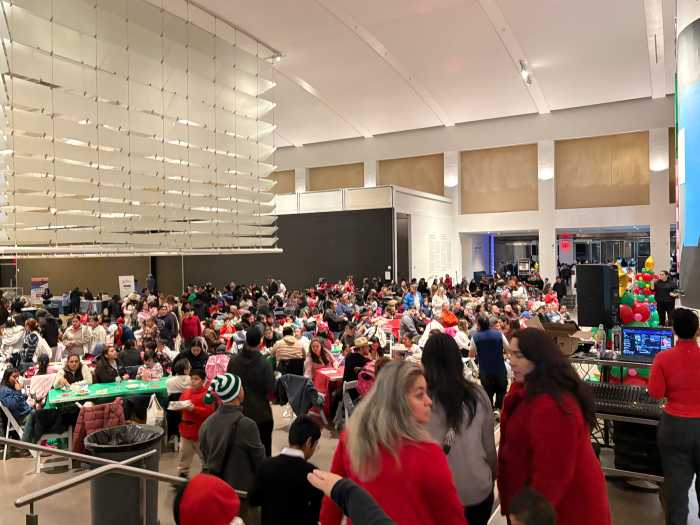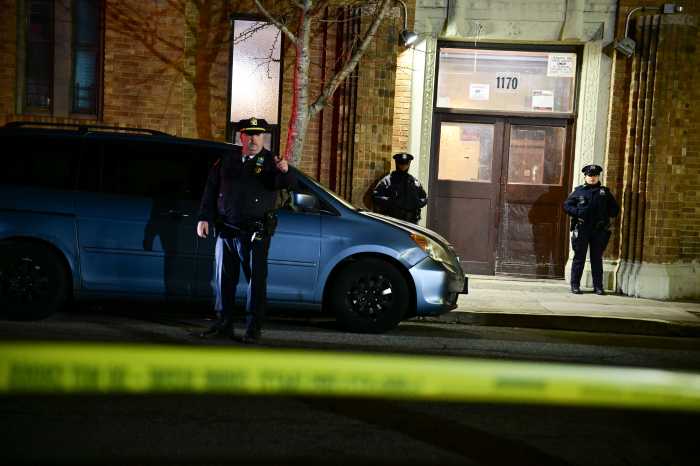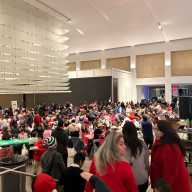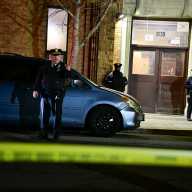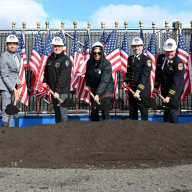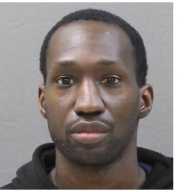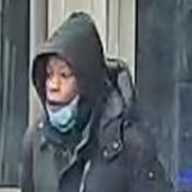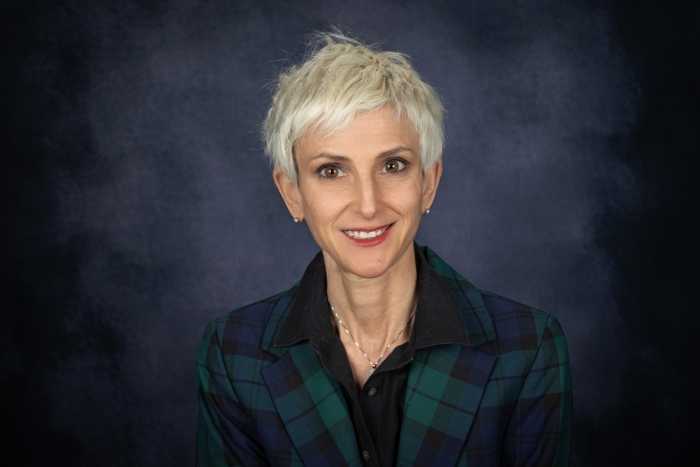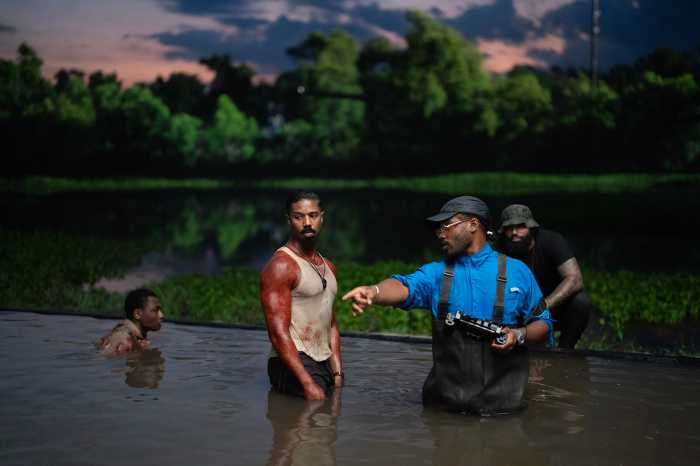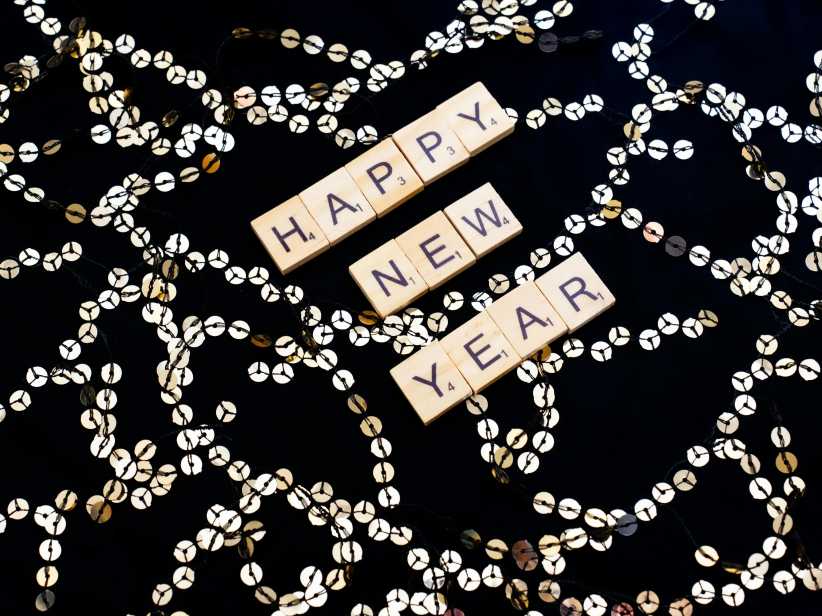By Philip Newman
It was late autumn 1951. A student sportswriter named Mario Cuomo for the St. John’s University newspaper The Torch was clearly worried about the prospects for a winning basketball season only weeks away.
Cuomo wrote that Coach Frank McGuire would “face the greatest challenge of his short but illustrious career” in trying to build a top team from only six returning lettermen and “promising but untried sophomores.”
He could hardly have predicted the inspired play of the Redmen, who caught fire in the post season a half century ago.
Cuomo, who went on to become an attorney and to serve three terms as governor of New York, can be forgiven if his attention during that basketball season might have been diverted a bit by his success in another sport.
“That was about the time I signed a contract with the Pittsburgh Pirates,” recalled Cuomo, a renowned sandlot and intramural league basketball player and world class fan of the sport.
In any case, St. John’s assumed a Cinderella role and battled all the way to the final game of the National Collegiate Athletics Association tournament.
The St. John’s climb to the NCAA finals on March 26, 1952 at Edmondson Pavilion in Seattle stands as the Johnnies’ greatest achievement thus far in collegiate basketball’s “Big Dance,” although they made the Final Four in 1985 and have won four NIT titles.
In the NCAA finals, they were overcome by the Kansas Jayhawks led by Clyde Lovellette, the 6-9, 246-pound center the New York Post called “the beast.”
En route to the finale, the Redmen pulled off one of the greatest upsets of the season by dashing the hopes of legendary Kentucky Coach Adolph Rupp for yet another NCAA trophy for his No.1-rated Wildcats.
Kentucky was just one of the favored teams the underdog St. John’s left in the dust in the 1952 NCAA tournament as they played at times near flawless ball in the late winter period later known as “March Madness.”
It was not all glory.
Several Redmen from the 1952 team agreed in recent interviews that the low point of the season was the 81-40 loss to Kentucky in Lexington, Ky. on Dec.17, 1951. It was the worst defeat in St. John’s history. Coach McGuire told the Brooklyn Eagle after the drubbing that “everything we did was wrong and everything they did was right.” The Redmen canned less than 17 percent of their field goals.
Some of the players recalled unpleasant memories of the game, which they said had nothing to do with the score.
“The Kentucky crowd booed and shouted abuse,” said Phil Sagona, a 6-foot-1 St. John’s forward. “They were hostile from the moment Solly Walker walked onto the floor.”
Walker, 6-foot-3, who played both guard and forward, was the first African American to wear the St. John’s uniform. When the team went to a restaurant in Raleigh, N.C., Walker had to eat in the kitchen because he was black.
“In New York, people had warned me about going to the South,” Walker said last month. “They said, ‘just be careful.’”
In those days, 21 states still had racially segregated schools and public accommodations. The U.S. Supreme Court decision outlawing public school segregation was two years away.
Of the early season loss to Kentucky, Walker said “that was a motivational factor for us. A wake-up call.”
When the independent St. John’s got a bid to the NCAA tournament (16 teams instead of today’s 64), their first opponent was the North Carolina State Wolfpack.
“We took an overnight train — a sleeper — to North Carolina,” Jim McMorrow, a sophomore guard, said recently. “We normally took trains or buses to out-of-town games. We flew only to far-off places.”
At Reynolds Arena in Raleigh, N.C., Solly Walker got applause when he took the floor, The Torch reported.
St. John’s beat North Carolina State 60-49, with Bob “Zeke” Zawoluk, the Redmen’s 6-foot-6-1/2 star, hitting 12 points, team captain Jack McMahon scoring 11 and Ronnie MacGilvray 7.
That set up the meeting with Kentucky, which had beaten St. John’s twice the previous season and so decisively weeks earlier.
Zawoluk scored 32, McMahon 18 and MacGilvray 5 in the epic struggle against the defending NCAA champions. Each time the Wildcats threatened the Redmen’s lead, Zawoluk scored a tip-in or a hook shot.
Kentucky All-American Cliff Hagan fouled out with 6:22 left.
It ended 64-57, stunning the Kentucky team, the crowd and Coach Rupp, who was hoping for a fourth NCAA crown in five years. Rupp nevertheless wished McGuire well at Seattle. The Johnnies were in the Final Four.
“I'm so happy I could fly to Seattle without a plane,” said Coach McGuire. “Those guys didn’t need a coach tonight. Every one of them was wonderful.”
McGuire was known as a coach who cared for his team members. “His players respond to his solicitude,” said sports columnist Ben Gould. For example, when Solly Walker was forced to eat in the kitchen of a Southern restaurant, he shortly found McGuire sitting beside him.
“As I remember, some other members of the team and coaching staff joined us,” Walker said.
“We flew to Chicago and picked up the Illinois team, then flew on to Seattle,” said Carl Peterson, a reserve center. “It was a long flight to Seattle — that was before jet planes. We were in a Lockheed Constellation and the air was rough. Some of the guys were a bit sick. I didn’t see anybody take any of the food the stewardesses brought us.”
After two attempts to land at Seattle-Tacoma airport in heavy fog, the plane headed south to Portland, Ore., arriving at midnight. The Redmen were almost a full day late getting to Seattle and missed some practice time.
Again, they played the role of giant killers, edging favored Illinois led by Johnnie Kerr, 61-59, and vaulting into the company of the Kansas Jayhawks, champions of the Big 7.
Were the Redmen confident as the opening tip-off approached for the NCAA title game?
“Of course,” said Peterson 50 years later. “It was us against the world. Look at what we had already accomplished.”
The title game did not start until 12:30 a.m. Eastern Standard Time and was televised only in Seattle. In Kansas, many Jayhawk fans retired early and set alarm clocks to awaken them at 11:30 p.m. Central Time to listen to radio accounts of the game.
The Redmen’s field goal percentage in the finals was actually better than that of Kansas, but the Jayhawks took more shots.
“We lost it because we didn’t do or couldn’t do what we were supposed to do,” Coach McGuire told Milton Gross of the New York Post after the defeat. Gross said that “broken down, it was just a simple case of too much beast.” He meant Lovellette.
It was Kansas 80, St. John’s 63.
The Johnnies missed 14 of 27 foul shots and found Lovellette close to impossible to stop. The Redmen double-teamed him, only to leave the Jayhawks’ Bill Leinhard and Bob Kenny open for 24 points between them.
“I remember trying for a rebound. I banged off of Lovellette and ended up on the floor,” Peterson said.
Lovellette scored 33 points and Zawoluk 20.
“He's too big,” Zawoluk said of Lovellette after the game. McMahon agreed: “He is the greatest center we have played against.”
Lovellette said last week that the Jayhawks had been watching the progress of St. John’s in the 1952 tournament.
“We were concerned,” Lovellette said. “These guys were really on a roll. With McMahon, Zawoluk, McGilvray and their teammates, they had us worried.
“But we were on a mission,” Lovellette said. “And everything came together for us and seemed to carry us through.”
Zawoluk amassed a St. John’s career total of 1,729 points, a record that held until Chris Mullen surpassed it more than three decades later.
In the Olympic trials on March 29 back in New York, St. John’s lost to LaSalle and SJU Athletic Director Water McLaughlin said in an interview with The Torch that the team was exhausted after 7,000 miles of travel and too many late nights.
“After beating Mr. Rupp’s Wildcats, we were so excited we could hardly sleep. We got everybody up at 6 a.m. for Mass,” McLaughlin said. The Torch said the team’s lack of sleep might also have been due to a party which even some of the vanquished Kentucky players attended.
McLaughlin said the team got to bed no earlier than 1 a.m. the next three nights because of late games and presentation ceremonies. They got up at 6:30 a.m. after losing to Kansas, but with plane delays did not get to New York until 3:40 a.m. the next day.
“The fellows played their hearts out against LaSalle but were just too tired,” McLaughlin said.
“It was, overall, a great season and a great experience,” Sagona said recently. “Not only did we do well, but we did well against fierce competition.”
“It was the experience of a lifetime,” said Peterson.
Coach McGuire and team captain McMahon, who played with Rochester Royals, are dead. Zawoluk played three seasons in the National Basketball Association, including two with the Philadelphia Warriors. The decades that followed brought personal misfortune for Zawoluk and a brush with the law.
MacGilvray once owned a restaurant in the Hamptons, but St. John’s has lost track of him in recent years. McMorrow coached high school basketball and is now with the New York City Board of Education. One of McMorrow’s players at Nazareth High School in East Flatbush was Mike Dunleavy, now coach of the Portland Trail Blazers.
Walsh, who kept the clock at Redmen games for years, was director of public relations at Bellevue Hospital and is retired. Sagona is among the nation’s major business entrepreneurs, formerly owning the Lancome cosmetics company. Peterson lives on Cape Cod in retirement after 43 years in business. Walker is retired after serving as principal of Manhattan High School.
Five years after ending up second to Kansas, McGuire was coaching North Carolina in another NCAA finals against another Kansas team, this one led by the great Wilt Chamberlain.
After a titanic regulation game and three overtimes, it was North Carolina 54, Kansas 53. A sweet victory for the coach who led St. John’s to a destination as yet unmatched in the school’s long and colorful basketball history.
Reach contributing writer Philip Newman by e-mail at Timesledgr@aol.com or call 229-0300, Ext. 136.

